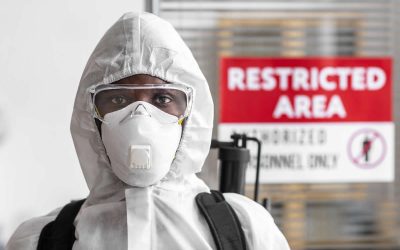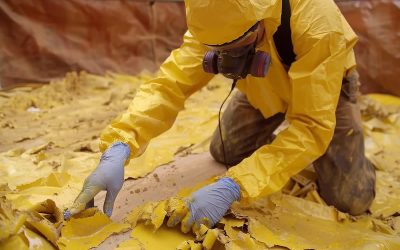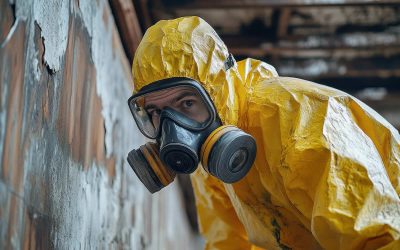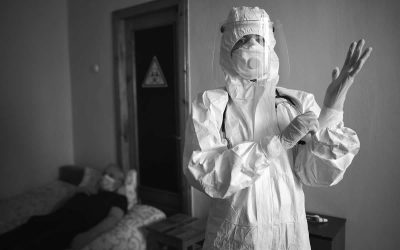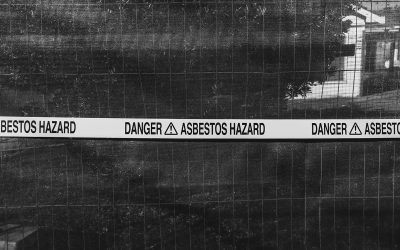When we think of hazardous materials, asbestos is often one of the first that comes to mind. Despite being heavily regulated today, asbestos was once considered a “miracle material” due to its strength, insulation properties, and resistance to heat and fire. But how did this once-celebrated material become synonymous with danger, and, crucially, how can you remove it safely? Here’s everything you need to know.
What Is Asbestos?
Asbestos is a naturally occurring mineral that exists as flexible, microscopic fibres. Found in rock and soil, its properties made it a popular material for a variety of uses, particularly in construction, automotive parts, and even household items. The fibres are incredibly durable and resistant to fire, which is why asbestos became a staple in industries in the early 20th century.
However, the discovery of its health hazards—primarily through prolonged exposure to the microscopic fibres—led to a steep decline in its use. When asbestos fibres are inhaled, they can become lodged in the lungs, causing inflammation, scarring, and, over time, significant health issues. These include asbestosis, lung cancer, and mesothelioma—a rare cancer directly linked to asbestos exposure.
Why Was Asbestos Used?
Before its dangers were commonly known, asbestos was praised for its versatility. Industries relied on it for its affordability and practicality, incorporating it into numerous products such as:
- Building Materials – Insulation, roofing, floor tiles, wall panels, and cement.
- Fireproofing – Textiles, sprays, and boards used in fire-resistant structures.
- Automotive Parts – Brake pads, clutches, and gaskets.
- Household Items – Hairdryers, ironing board covers, and even childrens’ toys.
These widely diverse applications underscore why asbestos was so desirable but also how its pervasiveness led to widespread health problems.
Health Risks of Asbestos Exposure
The danger of asbestos lies in its microscopic fibres, which can become airborne when disturbed. Once inhaled, they remain in the body indefinitely, leading to long-term health risks that can take decades to manifest. Common diseases associated with asbestos exposure include:
- Mesothelioma – A malignant cancer affecting the lining of the lungs or abdomen.
- Lung Cancer – Often caused by cumulative exposure.
- Asbestosis – A chronic lung disease caused by scarring from asbestos fibres.
- Pleural Thickening – Hardening of the lung lining, which can impair breathing.
Regulatory agencies worldwide have highlighted the severity of these health risks, leading to initiatives aimed at limiting exposure.
When is Asbestos Dangerous?
Not all asbestos-containing materials (ACMs) pose an immediate threat. When left undisturbed, asbestos fibres are often safely contained and may not pose a health hazard. However, the risk increases significantly when materials are:
- Friable – Loose and easily crumbled, such as insulation and sprayed coatings.
- Damaged – Broken or deteriorating materials that release fibres into the air.
- Disturbed – Materials disrupted by renovation, demolition, or natural disasters.
If materials containing asbestos begin to deteriorate or are subject to wear and tear, professional inspection and management are essential to prevent exposure.
How to Identify the Presence of Asbestos
Identifying asbestos is not straightforward. It cannot be detected by sight or smell, and its presence can only be confirmed through laboratory testing or professional inspection. Typically, an asbestos survey is conducted to assess the presence and condition of ACMs. The two primary types of asbestos surveys include:
- Management Surveys – Less intrusive and used to identify everyday risks within a building.
- Refurbishment/Demolition Surveys – More invasive and designed for planned structural changes.
It’s important to engage licensed asbestos professionals to perform these surveys for accurate results and safety compliance.
Can You Remove Asbestos Yourself?
Attempting to remove asbestos yourself is highly discouraged and, in some cases, illegal. Removing asbestos without proper training and equipment can release hazardous fibres into the air, posing a risk to you and anyone in the vicinity. Federal laws in most countries require that asbestos removal be entrusted to certified professionals with proper training and licensure.
Professional Asbestos Removal
The process of asbestos removal is highly regulated to ensure safety. Below is an overview of the key steps in the asbestos removal process:
1. Survey and Risk Assessment
A licensed professional conducts an asbestos survey to determine the type, location, and condition of ACMs. A detailed risk assessment then outlines the safety measures required for removal.
2. Preparation and Containment
The work area is sealed off using plastic sheeting and negative pressure enclosures to ensure fibres don’t spread beyond the removal zone. HEPA air filtration systems are often used to maintain air quality.
3. Personal Protective Equipment (PPE)
Workers wear specialised PPE, including respiratory protective equipment (RPE), disposable coveralls, gloves, and boots, to minimise personal risk.
4. Removal of ACMs
Materials are carefully removed without breaking or damaging them, which reduces the release of fibres. Wet methods are often used, spraying materials with a surfactant to suppress dust during the process.
5. Decontamination
The work area and all equipment are cleaned thoroughly using HEPA vacuums and wet-wiping methods to capture residual fibres.
6. Disposal
ACMs are double-bagged in heavy-duty polythene, appropriately labeled, and sent to licensed disposal facilities specialised in handling hazardous waste.
7. Post-Removal Clearance
Air monitoring and clearance testing are conducted to ensure the area is safe for re-occupancy. A clearance certificate is issued to confirm the site is asbestos-free.
Legal and Environmental Regulations
Governments across the globe have introduced strict laws to minimise asbestos exposure and manage its removal. For instance:
- UK – Complete ban on the use of asbestos-containing materials since 1999.
- US – Regulations focus on limiting asbestos use and managing legacy asbestos; plans to phase out chrysotile asbestos have been announced.
- Australia – Banned asbestos in 2003, with stringent enforcement for monitoring and removal.
Compliance with these regulations is not just a legal necessity but also an ethical obligation to ensure the safety of occupants and workers.
Tips for Homeowners
If you suspect asbestos in your home, follow these guidelines:
- Do Not Disturb – Avoid drilling, cutting, or otherwise tampering with materials that might contain asbestos.
- Seek Professional Help – Always hire licensed asbestos contractors for testing and removal.
- Check Building Records – Homes and buildings constructed before the 1990s are more likely to contain asbestos.
The Importance of Proper Removal
Today, protecting yourself and others from asbestos exposure requires proactive measures. This includes regular inspections, awareness of at-risk materials, and professional removal when necessary. Failure to manage asbestos risks can result in severe health consequences, environmental hazards, and even legal repercussions.
By understanding what asbestos is, its risks, and the proper removal process, we can mitigate its harmful impact and maintain safe living and working environments. If you’re considering asbestos removal, contact licensed experts to ensure the process is carried out safely and efficiently.
Are you looking for Asbestos Disposal in Surrey? If so, contact us now!

